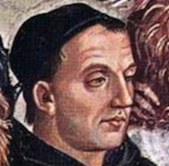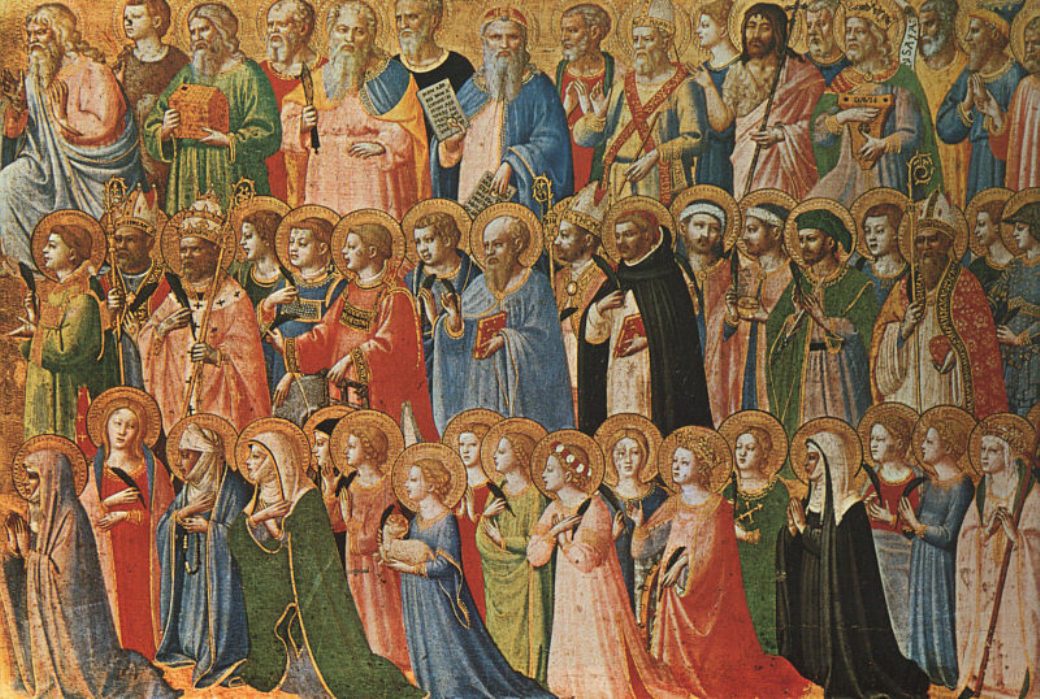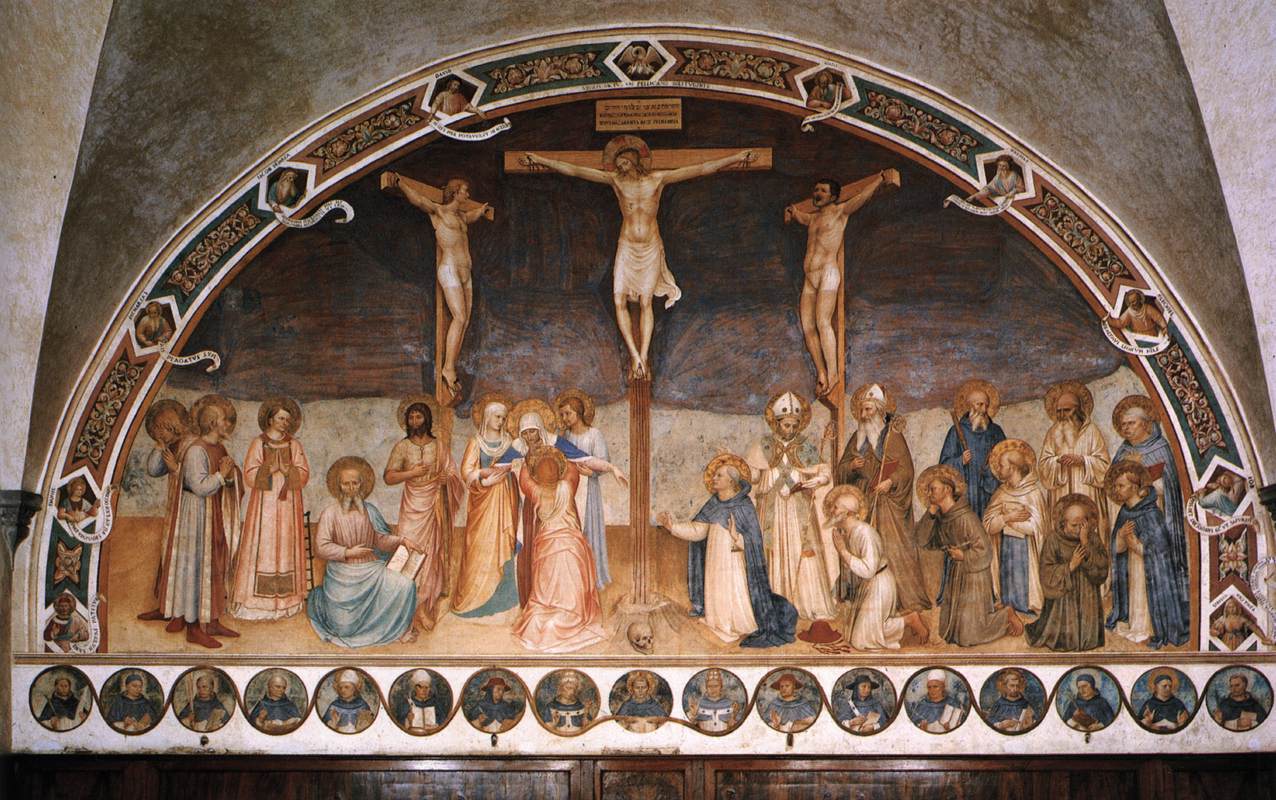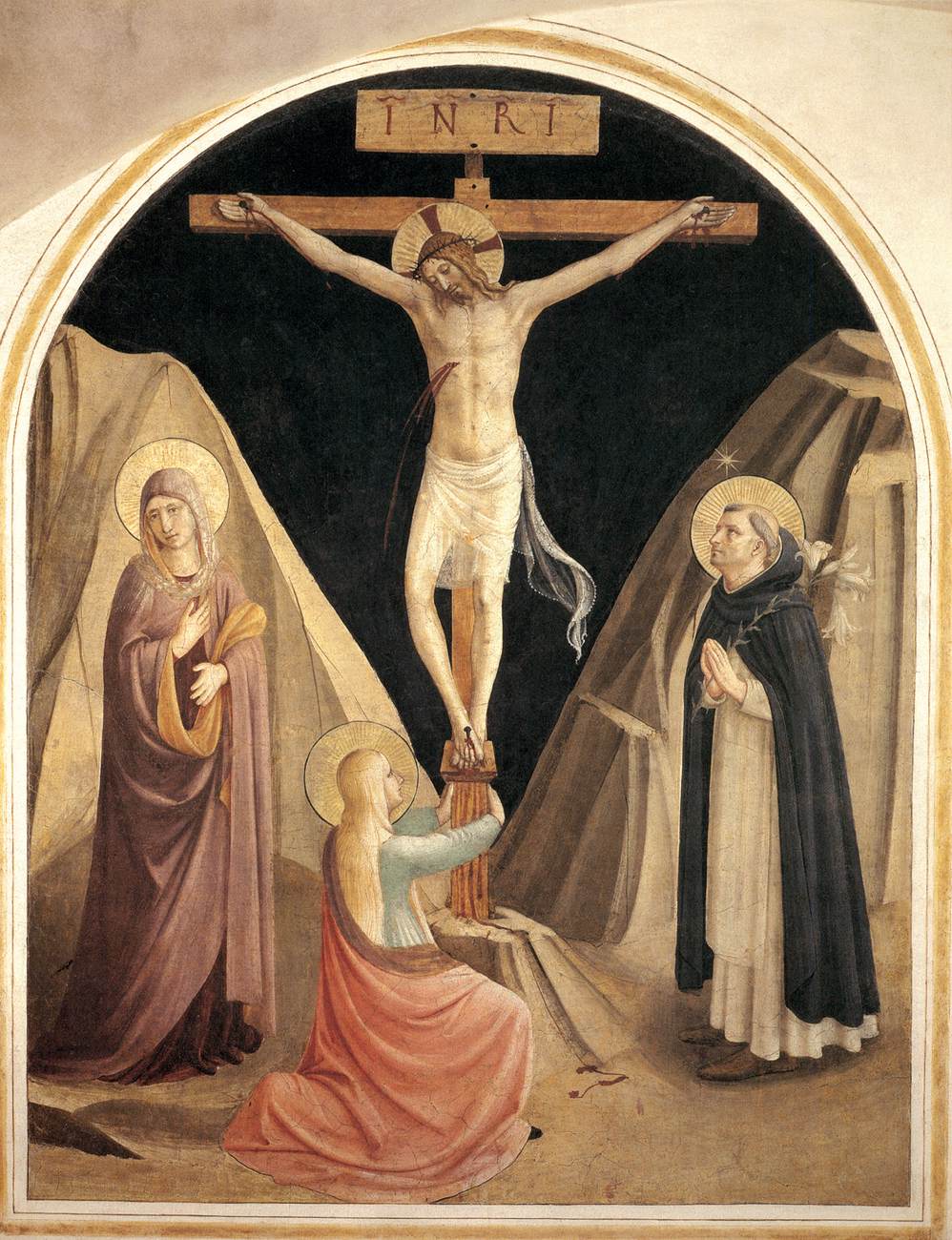
Commemoration of Bl. Giovanni da Fiesole (Fra’ Angelico)
 Today we celebrate the Commemoration of Bl. Giovanni (John) da Fiesole, more popularly known as Fra’ Angelico. He’s been called many things but why do we call him Fra’ Angelico or Beato Angelico? The key to answering this question lies in his life and his work.
Today we celebrate the Commemoration of Bl. Giovanni (John) da Fiesole, more popularly known as Fra’ Angelico. He’s been called many things but why do we call him Fra’ Angelico or Beato Angelico? The key to answering this question lies in his life and his work.
First, we need to understand the the title ‘Fra’ is an abbreviation of Friar, the latin word for Brother. Angelico similarly means Angel, thus the name can be understood in English as “Brother Angel”. But his baptismal name was in fact neither of these but Guido, and he was born in about 1395. Growing up in Vicchio, a village on the North-East outskirts of Florence in the Mugello Valley, he gravitated towards the burgeoning manuscript industry in the city. There he worked as an illuminator along with his brother, Benedetto, at a scriptorium. It seems Guido was a devout young man. The earliest documentary evidence we have of him is his enrolment in the lay confraternity of San Niccolo which, according to Christopher Hood, was “noted for its pious rather than social functions”. Guido was a boy more interested in prayer than climbing the Florentine social ladder.
And it was prayer, no doubt, that led him to join the Dominican Order at San Damiano, an observant convent in nearby Fiesole sometime between 1419 and 1423. He would have been about 25 years old — something of late vocation by the standards of the day — and took the religious name ‘Giovanni’. Benedetto, his biological brother, became his brother in religion and also joined entered the Order of Preachers at San Damiano at Fiesole. Benedetto kept his baptismal name.

At Fiesole, Fra’ Giovanni put his God-given artistic talents to good use. He decorated the church with three altar pieces. For the High Altar, he composed a resplendent polyptych, “The Risen Christ adorned by Saints and Angles”. The predella of this grand piece can be seen at the National Gallery in London and depicts the effigies of various Saints, including a good number of Dominican Saints. This is the earliest extant example of his work. The outer panels are said to be of the same hand as the main panels of the altarpiece, which we might take to be Giovanni and the three inner panels are by another hand, a collaborator. That Giovanni was assisted by a collaborator calls to the fore an important aspect of Dominican identity: the corporate nature of our apostolate. Giovanni’s art was not a personal vanity project but a collaborative effort, drawing upon his individual genius.

Fra’ Giovanni then embarked upon a prolific decoration of a new daughter convent at San Marco in Florence. It was paid for by the powerful de Medici family who were great patrons of Florentine art. Of the many wonderful paintings at San Marco, it seems fitting in Lent to focus upon the Crucifixion scene on the back wall of the Convent’s Chapter Room, painted sometime 1441-42 and which was restored only a couple of years ago. The fresco depicts the Crucifion scene with the evangelists present, and the two thieves either side (the good one composed and confident, the unrepentant one crying and in agony). Amongst the crowed at Golgotha lie an unprecedented array of Saints of various places and times. It’s as if Giovanni is encouraging us, the viewers, to picture ourselves also in the midst of the agonising scene of our redemption.
Reputation of his artistic brilliance soon spread and Giovanni became a man in demand. He was called to Rome by Pope Eugenius IV in 1445 to paint the Chapel of the Holy Sacrament. And, at the Pope’s request, he also painted the vaulted ceiling at Capella Nuova at the Cathedral in nearby Orvieto. But it wasn’t just his artistic talents that were recognised: he was also noted for his holiness and religious observance. So it was that Giovanni returned to Fiesole again in order to serve the community as Prior for a term of 3 years from 1449 to 1452.
However, his reputation was undiminished by his absence in Rome. Thus he was called back to Rome in 1454 for yet more commissions under the patronage of the Pope. Vasari, one of Fra’ Giovanni’s early biographers, relates a telling story about Fra’ Giovanni’s character and religious observance at the Papal Court during this period: “Fra Giovanni was a simple and most holy man in his habits, and it is a sign of his goodness that one morning, when Pope Nicholas V wished him to dine with him, he excused himself from eating flesh without the permission of his prior, not thinking of the papal authority.”
During this second period in Rome, Fra’ Giovanni died on 18th February in 1455. He was buried in Santa Maria sopra Minerva. His tomb bears an inscription by the humanist, Lorenzo Valla, which reads, “Here lies the venerable painter Fra Giovanni of the Order of Preachers. Let me not be praised because I seemed another Apelles but because I gave my riches, O Christ to Thine,. For some works survive on either and others in heaven. The city of Florence, flower of Etruria, gave me, Giovanni, birth.” Valla’s text continues, “The glory, the mirror, the ornament of painters, Giovanni the Florentine is contained within this place. A religious, he was a brother of the holy order of St. Dominic, and was himself a true servant of God. His disciples bewail the loss of so great a master, for who will find another brush like his? His fatherland and order lament the death of a consummate painter, who had no equal in his art.”
In Giorgio Vasari’s Lives of the Artists, written prior to 1555, he was already known as Fra Giovanni Angelico. Vasari wrote of him: “Fra’ Giovanni was a simple manned most holy in his habits… He was most gentle and temperate, living chastely removed from the cares of the world. He would often say that whoever practiced art needed a quiet life and freedom from care, and that he who occupied himself with the things of Christ ought always to be with Christ… Some say that Fra; Giovanni never took up his brush without first making a prayer. He never made a Crucifix when the tears did not course down his cheeks, while the goodness of his sincere and great soul in religion might be seen from the attitudes of his figures”
Vasari’s epithet soon became Fra’ Angelico, which in the hands of an Italian form of Chinese whispers became “Beato Angelico”. This popular clamour was prophetic if not slightly presumptuous for it was only in 1982 that Pope St. John Paul II formally beatified him, and two years later declared him patron of Catholic artists.
We commemorate the memory of his saintly life and the legacy of his beautiful art, which are an aid to prayer not only in Fra’ Angelico’s execution but also in our gazing contemplation today.

Sorry, the comment form is closed at this time.



A Website Visitor
Not ‘san Damiano’ in Fiesole but ‘saint Dominic’!